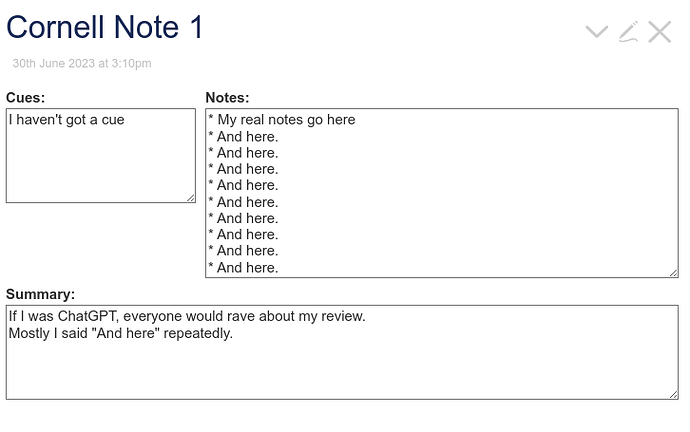On revisiting this thread I am impressed with solutions above so far, however I have started to see this in a new light.
Clearly Cornell Notes originated in paper forms, and I have long sought to make software as easy to use and annotate as paper and it still falls short. Although the methods here come close.
However as I am “want to do”, I tried to look at this more generally, trying to avoid my own prejudices introduced by the by the original concept.
It seems to me when you boil it down this is about introducing cues to text, or cues for which you later add text.
- Making the cues appear along side the text to the left is the “Cornell notes” way but it is only one of many.
- So too me I would see value in creating a generic cue mechanism not unlike @Scott_Sauyet has already done, then allowing a user to select from a number of different representations of that same information. Cues can be linked to a inline part of the text, word, sentence or paragraph.
- So they can be reduced to tooltip, or expanded to a modal, or viewed in the left column (as in Cornell Notes) and any new creative ways.
- This is starting to look like other solutions in tiddlywiki and HTML such as footnotes, contents and anchors, so there will be “prior art”.
Let us assume we can move forward with a generic Que mechanism that can present the same relationships in various ways, including aligned with the text, the next design consideration is how best to allow the author of such content to enter the content indicate cues.
- In considering this let us not reduce the possibilities of including macros, links and transclusions in our content.
- Consider also another tiddler transcluding the notes, listing only the que’s or only the content without que’s.
- Can the que be linked more than serially, Like in @Scott_Sauyet sample notes but also to a word or phrase?
- Could we draw a line from a queue to its underlined text in the Cornell view?
So when I look at the content in @Scott_Sauyet sample notes I think the way it looks could be simplified further.
I already have some ideas, but I do not want to “prejudice future possibilities” but urge the community to consider a more generic solution.

